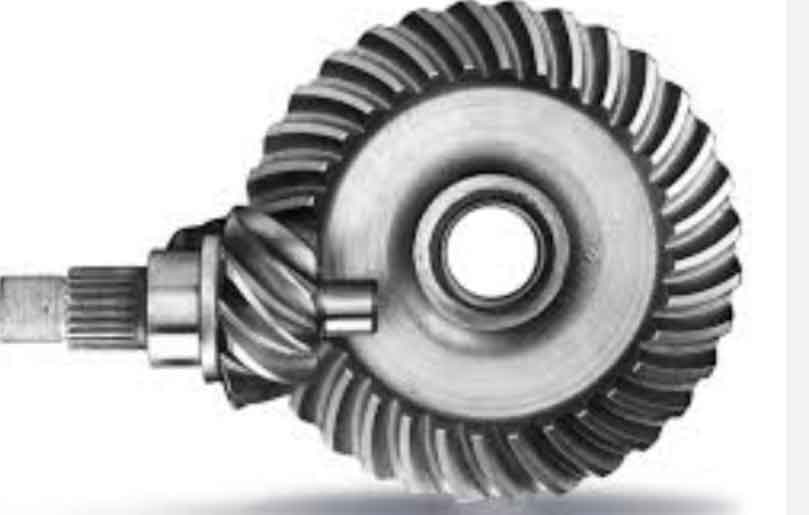Abstract
The pursuit of miniaturization, high speed, and high efficiency has become a crucial trend in the development of transmission components. This paper focuses on the optimization of strength design parameters for super-reduction hypoid gears, aiming to enhance their performance and reliability. Through comprehensive analysis and simulation, this research provides valuable insights into the design and improvement of super-reduction hypoid gears.

1. Introduction
Super-reduction hypoid gears are widely used in servo systems of CNC machines, industrial robots, and mechatronics products due to their ability to replace traditional worm gear devices. However, the reduction in tooth number often leads to tooth profile variations and increased bending stress, which can cause gear failure. Therefore, it is essential to study the failure mechanisms and optimize the design parameters of super-reduction hypoid gears.
2. Literature Review
| Author | Year | Research Focus | Significant Findings |
|---|---|---|---|
| Fong ZH | 1993 | Geometric Modeling | Established a geometric calculation model for hypoid gears based on Litvin’s theory |
| Zhang Hui | – | 3D Modeling | Used UG software to create tooth surface patches for large and small gears |
| Liu Huaiju | – | Fatigue Research | Summarized existing theories and prediction methods for gear contact fatigue |
| He | – | Finite Element Analysis | Analyzed maximum bending and contact stresses using Ansys |
3. Modeling and Simulation of Super-Reduction Hypoid Gears
3.1 3D Modeling
The 3D modeling of hypoid gears is fundamental for analyzing gear strength and predicting fatigue life. This research employed the following steps to create 3D models of super-reduction hypoid gears:
- Established mathematical models for gear tooth surfaces.
- Discretized the tooth surfaces.
- Imported discrete points into SOLIDWORKS to create 3D models.
3.2 Simulation Analysis
Using Ansys Workbench, the research conducted contact fatigue strength analysis, bending stress analysis, and other simulations to investigate the stress distribution and fatigue life of super-reduction hypoid gears.
Table 2: Simulation Settings
| Parameter | Setting |
|---|---|
| Contact stiffness | 1 |
| Update stiffness | Each iteration |
| Time step control | Automatic bisection |
4. Strength Failure Research of Super-Reduction Hypoid Gears
4.1 Stress Distribution
Simulation results showed that the maximum contact stress occurs near the tooth tip, with a value of 572.21 MPa.
4.2 Effect of Installation Errors
Three types of installation errors were studied: axial installation error (H), shaft angle installation error (Σ), and offset distance installation error (V).
Table 3: Effect of Installation Errors
| Error Type | Impact on Gear Life |
|---|---|
| Axial (H) | Reduces gear life; causes contact stress failure |
| Shaft Angle (Σ) | Most significant impact on gear life; causes edge contact |
| Offset Distance (V) | Causes edge contact during gear engagement or disengagement |
5. Optimization of Super-Reduction Hypoid Gear Design Parameters
5.1 Design Variables
The design variables included spiral angles of large and small gears, pitch cone angles, pressure angles, etc.
Table 4: Design Variables
| Variable | Description |
|---|---|
| β1, β2 | Spiral angles of large and small gears |
| δ1, δ2 | Pitch cone angles of large and small gears |
| α | Pressure angle |
5.2 Optimization Goals
The optimization aimed to maximize the pitch circle radius of the small gear and the load-carrying capacity of the gear teeth.
5.3 Optimization Results
Simulation results after optimization showed significant improvements:
- Fatigue life of forward-rotating gears increased by up to 25.6%.
- Fatigue life of reverse-rotating gears increased by up to 9.4%.
- Contact stress and minimum principal stress were reduced by 9.5% and 13.5%, respectively.
Table 5: Optimization Results
| Parameter | Before Optimization | After Optimization | Improvement |
|---|---|---|---|
| Fatigue life (forward) | – | +25.6% | +25.6% |
| Fatigue life (reverse) | – | +9.4% | +9.4% |
| Contact stress | – | -9.5% | -9.5% |
| Minimum principal stress | – | -13.5% | -13.5% |
6. Conclusion
This research optimized the design parameters of super-reduction hypoid gears, focusing on maximizing the pitch circle radius of the small gear and enhancing the load-carrying capacity. Through comprehensive simulation analysis, the optimized design was proven to significantly improve gear performance, reducing stress and increasing fatigue life. The findings of this research contribute to the advancement of super-reduction hypoid gear design and manufacturing technology.
